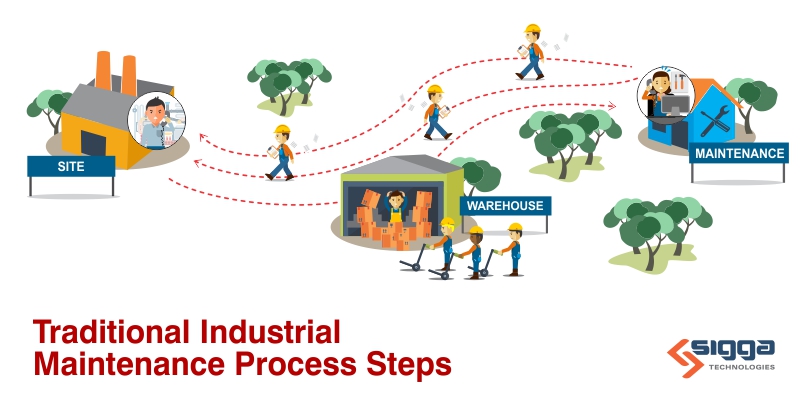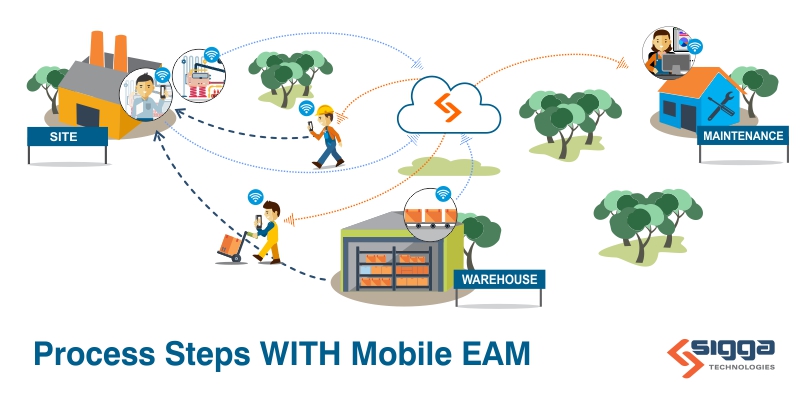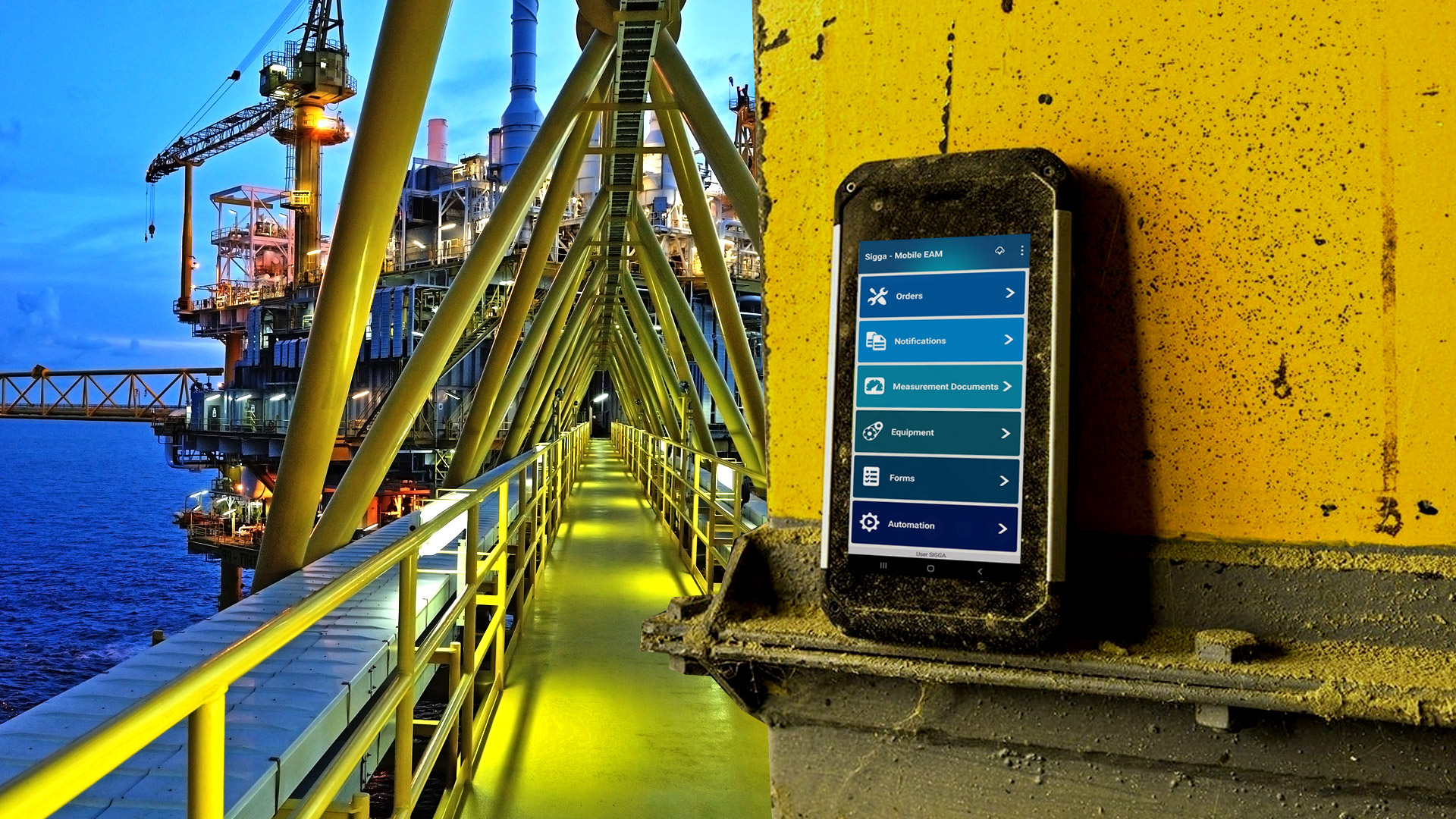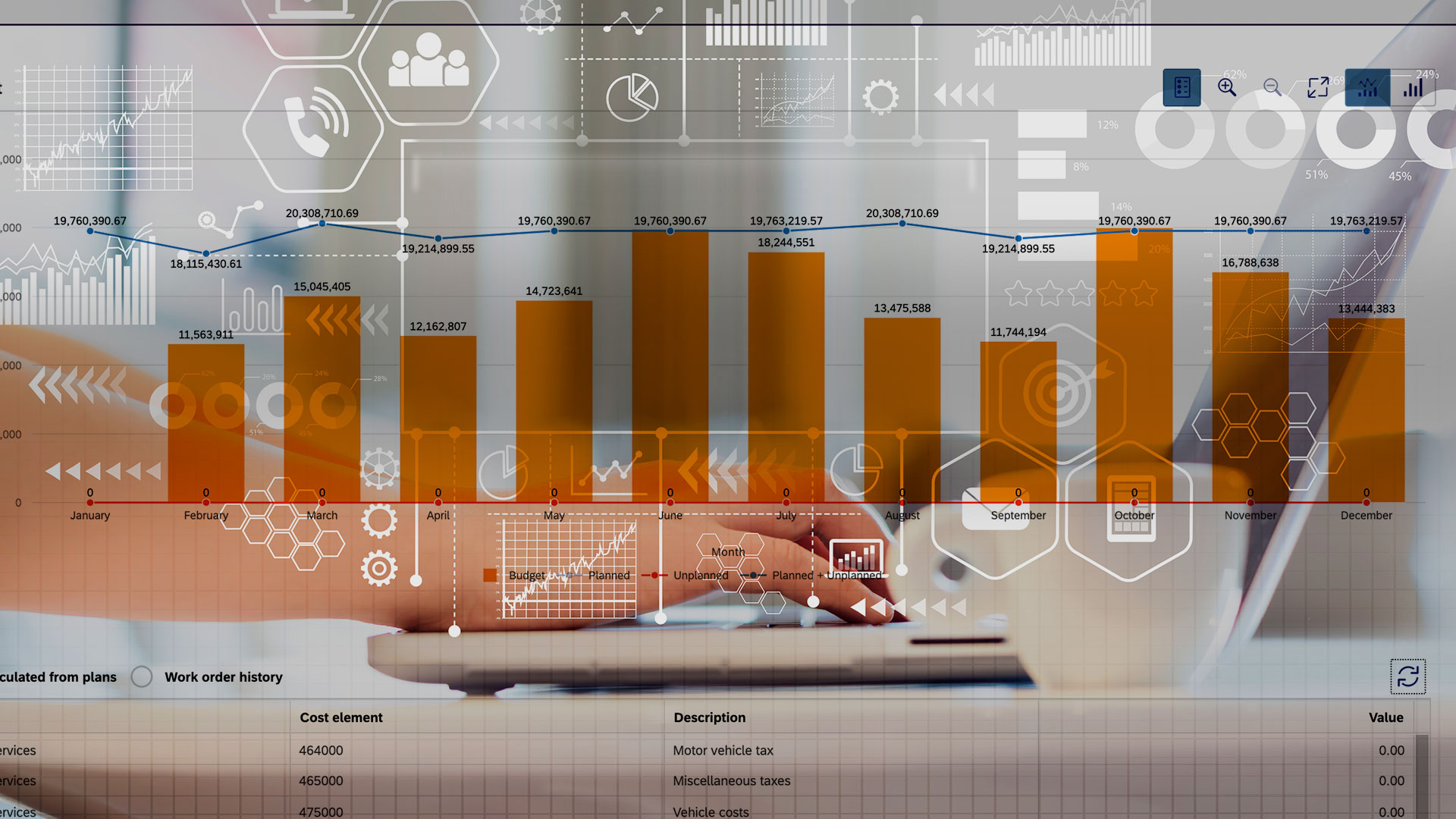Have you ever questioned what is a Mobile EAM app and why do you need it? Mobile EAM spelled out is Mobile Enterprise Asset Management — not to be confused with SAP Enterprise Asset Management Software. Confused? You are not alone. In this article, we will clarify terms and how going mobile significantly improves key processes within maintenance operations with SAP.
See How Mobile Enterprise Asset Management Software for SAP Improves Productivity
What is the difference between EAM and Mobile Enterprise Asset Management software?
Traditional Maintenance Processes Without a Mobile EAM Solution
What Mobile EAM Apps Can Do For You
The Benefit Impact for Your Organization
What You Should Consider When Selecting a Mobile EAM App
What is the difference between EAM and Mobile Enterprise Asset Management Software?
To start, let’s cover some definitions to frame the operational processes impacted by Mobile Enterprise Asset Management software.
- Mobile Enterprise Asset Management. According to Wikipedia, “Mobile enterprise asset management (or mobile EAM) refers to the mobile extension of work processes for maintenance, operations, and repair of corporate or public-entity physical assets, equipment, buildings, and grounds. It involves management of work orders (planned, break/fix or service requests) via communication between a mobilized workforce and computer systems to maintain an organization’s facilities, structures, and other assets.”To put this in further context, a Mobile EAM app is an add-on to an organization’s Enterprise Asset Management (EAM) software (such as SAP) in order to manage work digitally by connecting the front-end worker to SAP through a mobile app.
- Enterprise Asset Management. As described by SAP, here is the full breadth of what an EAM is designed to cover: “Enterprise asset management (EAM) incorporates the management and maintenance of physical assets owned by a company throughout the entire lifecycle of an asset, from capital planning, procurement, installation, performance, maintenance, compliance, risk management, through to asset disposal. EAM software helps organizations to plan, optimize, execute, and track the necessary activities, priorities, skills, materials, tools, and information associated with an asset. Failure to manage and maintain enterprise assets can lead to unplanned downtime, suboptimal asset performance, and supply shortages. Some organizations also rely on EAM systems to demonstrate compliance with regulatory bodies to preclude liability if a failure occurs.”
Adding a mobile interface to specific functions, greatly improves the efficiency of working with and maintaining the data within SAP overall. To understand the impact, consider the process steps of traditional maintenance management without a mobile solution.

Traditional Processes Without a Mobile EAM Solution
Traditional processes start with work order assignments that are planned and scheduled using spreadsheets with data pulled from the EAM system. After checking parts inventories and production schedules (i.e. the best timing to conduct maintenance tasks), schedulers assign tasks to specific technicians and create a daily or weekly schedule.
With technicians assigned, work orders are printed, collated with printed work instructions, and physically distributed to technicians. Technicians proceed to the work locations, complete their tasks, and manually capture notes on the paperwork orders. At the end of the work shift, they return the paperwork orders to be individually entered back into the EAM system through manual data entry, work order by work order.
If a technician discovers an issue while conducting an inspection, they find someone to create a notification in the EAM if urgent or make a note on the current work order to enter the information into the EAM system later. If they don’t have the parts they need, it’s an extra trip to the warehouse. The result?
- Extra steps and delays in problem-solving
- Tedious duplicate data entry
- Poor data quality in the EAM system
- Unnecessary use of paper & printing costs
Now, let’s take a look at how these workflows are improved with a mobile device and EAM app:

- Order management. Work orders are dispatched to technicians digitally wherever they are at completely replacing the paper-based work order process (cut printing costs). The interface is simple and intuitive to the technician allowing him/her to complete their tasks and provide work order status updates real-time to SAP PM (cut duplicate data entry). Orders can be approved, closed, appended, redistributed, all from within the app based on user roles and authority for the process steps (increase responsiveness to inevitable changes).
- Notification management. Like work orders, notifications can be approved, updated, turned into work orders, and assigned to a technician. When a new issue is discovered, the technician can immediately create a notification on the go, allowing the organization to immediately act on the problem if urgent (increase responsiveness to inevitable changes).
- Capture measurement readings. A cornerstone to advanced maintenance process such as predictive or condition-based maintenance is the capture of quality data for analysis. A Mobile EAM app makes it easy for the technician to capture sensor and equipment status details while conducting rounds. Data is structured to support analysis and decision making for asset management (improve data quality). Read more about the importance of data integrity for maintenance operations.
- Worker communication. Management and maintenance technicians can stay in constant communication to coordinate schedule changes (increase responsiveness to inevitable changes).
- Access to historical data and asset information for scheduled maintenance tasks. With immediate access to instructions, manuals, parts availability, and illustrations, maintenance technicians have the information they need at their fingertips to complete a planned or unplanned task(cutting extra steps to retrieve information) and no excuses for following instructions (improving safety).
- Maintain equipment records. While in the field or in the plant, Technicians can update the master data records for assets and equipment due to moves, new installation, or asset removal (improve data quality).
- Time tracking and workforce management. Track the time it takes to complete maintenance tasks – manually (or with some solutions automatically based on proximity to the job site). Validate work hours, measure wrench time for KPIs, and use the information to improve job planning and scheduling in the future (improve data quality).
- Reporting. Capture the data to report on key metrics such as Wrench Time, Maintenance Effectiveness, and downtime measures such as OEE, MTTR and MTBF. Plus, gain easy access to the information needed to continually improve processes and achieve more advanced levels of asset maintenance strategies such as Reliability Centered Maintenance, condition-based maintenance, and predictive maintenance.
The Benefit Impact for Your Organization
Going paperless and keeping technicians in the field or plant with immediate access to information results in optimized asset performance and utilization while minimizing operations and maintenance costs. Read more about the breadth of benefits of going paperless.
Some examples of real-world results:
Ambev, a part of AB InBev, the largest brewery in the world, reduced their MTTR (Mean Time to Repair) by 79% – from 24 to 5 days – by replacing their paper-based maintenance processes with Sigga’s Mobile EAM solution. Ambev also saved over 7.2 million sheets of paper per year ($360,000), reduced downtime, increased production, and increased the productivity of their technicians and workers by 15%.
Furnas is an electricity generation and transmission organization producing 40% of the energy consumed in Brazil. Furnas improved the utilization of their staff, saving 90,000 hours per year from cutting out administrative activities every month, reallocated 46 staff members to other functions, and reduced their costs by $630,700 annually.
Bunge, a soybean and wheat processing company producing vegetable oil and ethanol, saved 10,000 sheets of paper per month on a volume of 1,370 maintenance orders per day.
Cenibra is a producer of bleached pulp from Eucalyptus fiber. Cenibra improved the process management of contractors and reduced administrative work on a volume of 60,000 maintenance orders and 190,000 inspection rounds conducted by staff and contractors per year.
What You Should Consider When Selecting a Mobile EAM App
-
User experience features. Not all mobile apps are the same, it is important to dig into the mobile features that support a good user experience for adoption and active use of the app. Considerations include ease-of-use of the interface and app performance as maintenance tasks can require a high volume of data transfer with SAP. In addition, consider the online and offline use especially in operations with locations without connectivity. Does the technician have the information they need while offline and how disruptive is the sync experience when back online? For more aspects to explore, read our article, Top 5 Mobile App Features for Maintenance.
- Compatibility considerations. Besides the app compatibility with mobile devices: Android, Apple etc., consider how the app is to be maintained. Updates to mobile operating systems, integration and updates to SAP for that matter, require timely actions to maintain Mobile EAM app security. Read more about this topic in our article, Today’s Build vs Buy Software Decision Factors.
- Adjacent solutions. Consider how the Mobile EAM app compliments other connected processes within Enterprise Asset Management, such as planning & scheduling and parts inventory management. These are just some of the processes that can be improved with automation and mobility. For further details, read: Opportunities to optimize SAP PM with added automation.
- Adaptability. The flexibility of the Mobile EAM app to be modified to the organizations’ unique processes and updated as needed due to changes in regulations or the environment. What is the process? Costs? How fast can changes be made? Are developer resources required? Explore these factors in our article, New Tech Brings New Flexibility in Mobile Maintenance Apps.
It is an opportunity to streamline important maintenance processes with SAP EAM!
Take the proven step to deploy Mobile EAM Software with SAP. In doing so, you will modernize your industrial maintenance operations and be in a better position to take advantage of the endless stream of technology improvements in maintenance management.
Why Consider Sigga for Mobile Enterprise Asset Management Software?
Here at Sigga, we have a singular focus on the digital transformation of data-intensive maintenance work with asset-intensive industries.It takes dedication and ongoing development to sustain world-class mobile experiences. As a result, our EAM Empower solution is the leading Mobile EAM app for SAP environments. We design our apps to deliver exceptional user experiences to drive adoption and full use of the app. We have also designed our own proprietary, SAP integration technology to deliver Enterprise scale performance for high volumes of data and users.
In addition, we offer a Mobile Warehouse and Inventory solution to extend the mobile use cases and an integrated Planning & Scheduling desktop software solution to further streamline processes and drive efficiencies with SAP.
At Sigga, it is our mission to empower companies to achieve their mobile digital transformation goals by providing best-in-class software technology.
Read more about Sigga EAM Empower mobile app for SAP Enterprise Asset Management.









